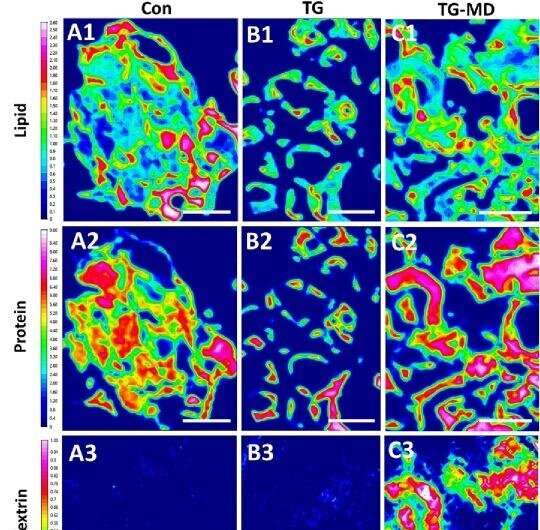This article has been reviewed according to Science X's editorial process and policies. Editors have highlighted the following attributes while ensuring the content's credibility:
fact-checked
peer-reviewed publication
trusted source
proofread
Advanced method to improve stability of spray dried microcapsules for delivery of nutrients

Food science researchers from the University of NSW have developed a promising method to make spray dried beta carotene (β-carotene) microcapsules more stable, as reported in a paper published in Food Chemistry.
Beta carotene microcapsules are used as a dietary supplement to provide a source of beta carotene, which is converted by the body into vitamin A, an essential nutrient required for normal growth, vision, immune function, and overall health.
The lead author, Dr. Woojeong Kim, who was a Ph.D. candidate at the time supervised by Prof Cordelia Selomulya at UNSW, proposed a novel blend of plant and dairy proteins with and without the carbohydrate maltodextrin as carriers to encapsulate β-carotene.
They found that cross-linking the proteins with an enzyme and adding maltodextrin improved the encapsulation efficiency and reduced the porosity of the microcapsules, essentially making the particle wall more stable.
The β-carotene was successfully preserved for at least eight weeks, with an encapsulation efficiency of more than 90%.
Microencapsulation is a technique used to protect sensitive substances by encapsulating them in a specific material. The choice of materials is important for the effectiveness and stability of the encapsulation.
Spray drying is a popular method for encapsulation in the food and pharmaceutical industries, as it transforms liquid materials into powder form. However, controlling the amount of surface fat in spray dried particles is challenging.
The researchers used an advanced technique on the Australian Synchrotron's Infrared Microspectroscopy (IRM) beamline, to analyze the surface composition of the microcapsules and found that the cross-linked protein-maltodextrin complex helped to reduce the amount of oil exposed on the surface.
Synchrotron-FTIR microspectroscopy is used to obtain high-quality spectra at a small scale, allowing for the examination of microparticles.
"The IRM technique allowed us to look at the molecular level at what was going on at the surface with the cross linking of the protein structures, particularly how much of the surface is protein," explained Dr. Kim, whose investigation of dairy and plant proteins as food emulsifiers was published in a paper in Trends in Food Science and Technology in 2020.
"It gave us in depth characterization information about what happens when you cross link the dairy and plant protein and not just mix them together," she added. "It also provided some useful secondary structural information about the proteins.
"Since the first development of the 'macro-ATR' technique in 2016, our beamline has proved to be very useful in various food and drug delivery applications to investigate chemical distributions at the surface and interfaces critical for this research. Other highlight includes mapping the protein and lipid distributions of a fresh commercial mozzarella cheese right at its storage temperature (4°C) without any sample pretreatment to ensure the accuracy of the results," said beamline scientist Dr. Pimm Vongsvivut, a co-author on the paper.
Prof Selomulya said that, more broadly, the cross-linked pea and whey protein-maltodextrin complex was a promising ingredient for functional foods.
More information: Woojeong Kim et al, On surface composition and stability of β-carotene microcapsules comprising pea/whey protein complexes by synchrotron-FTIR microspectroscopy, Food Chemistry (2023). DOI: 10.1016/j.foodchem.2023.136565
Journal information: Food Chemistry





















